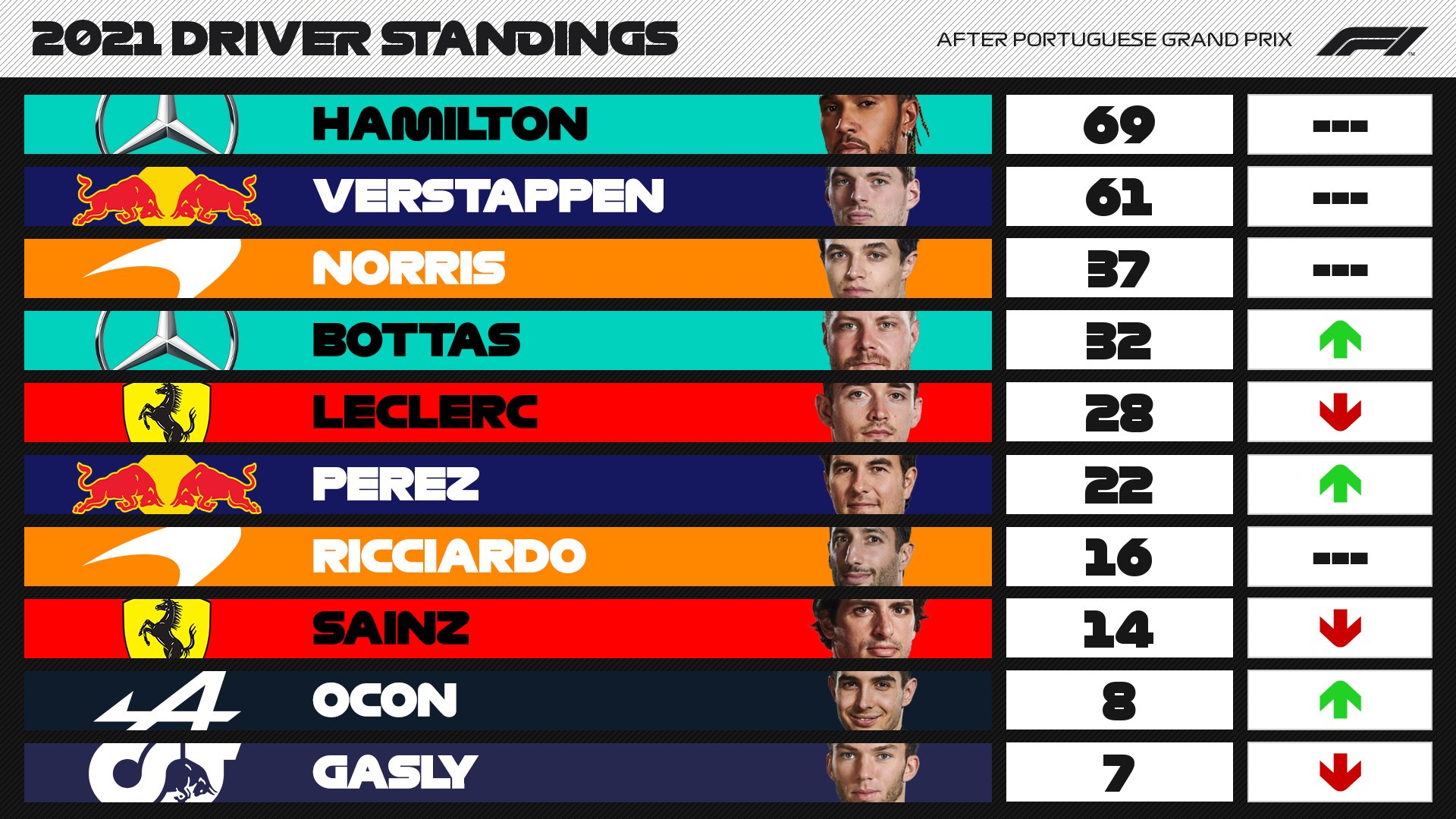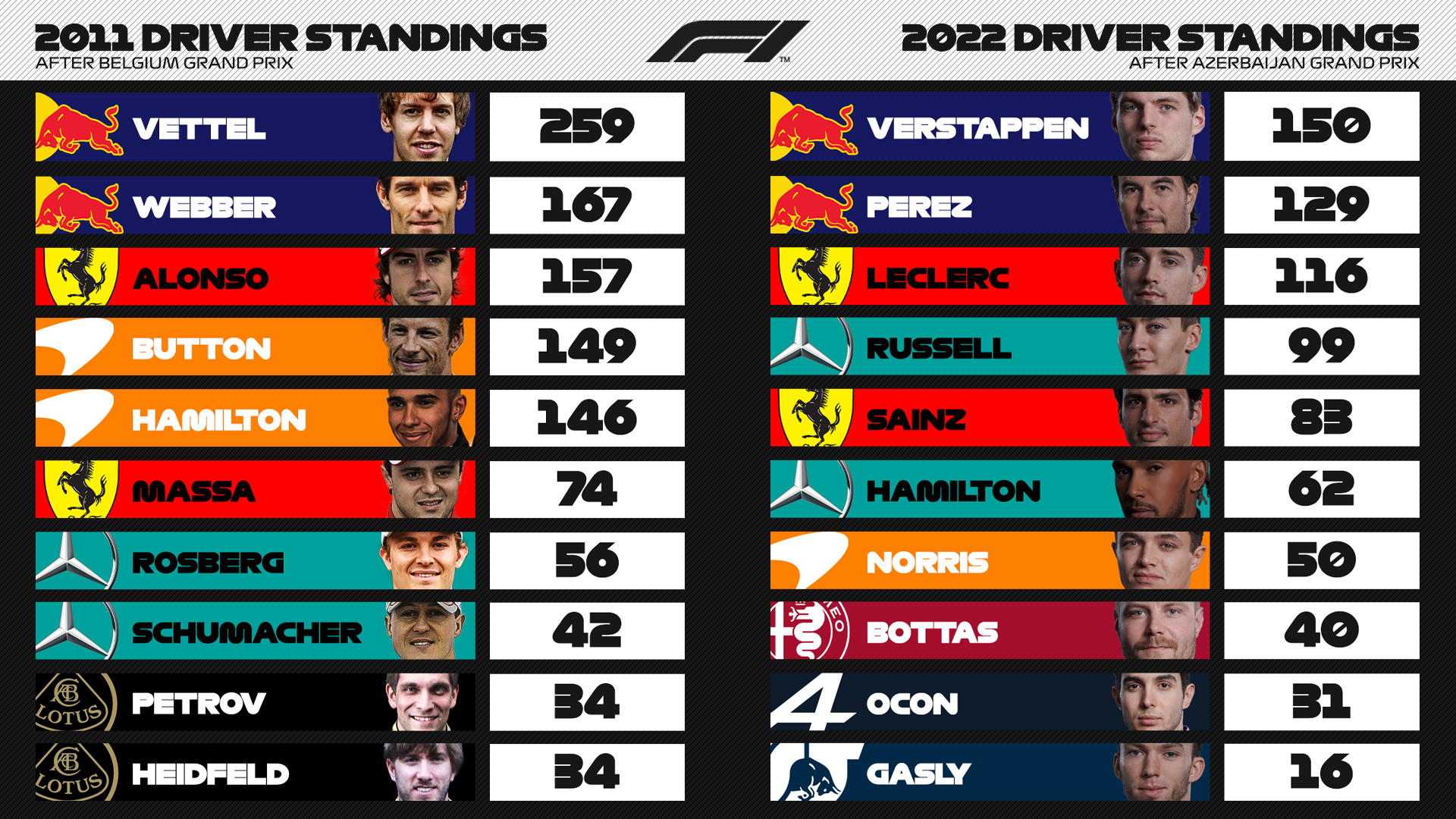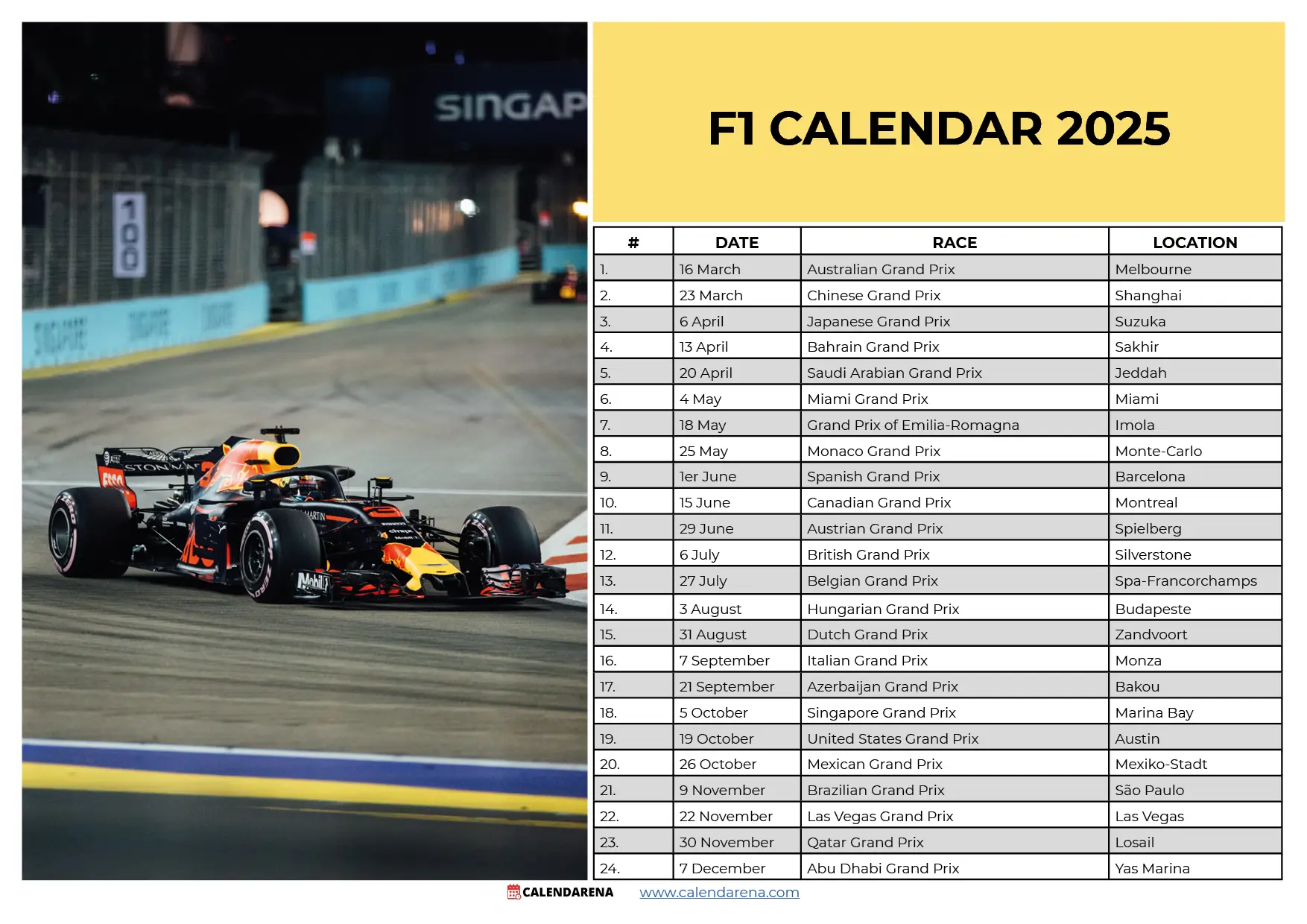
The Ever-Shifting Sands: A Deep Dive into the F1 Drivers’ Championship Standings
The Formula 1 World Championship is a relentless spectacle of speed, skill, and strategy, culminating in a thrilling battle for the coveted Drivers’ Championship title. The standings, a constantly evolving reflection of the season’s unfolding drama, offer a captivating narrative that extends far beyond the checkered flag of each Grand Prix. Understanding these standings requires more than just a glance at the points tally; it demands an appreciation of the multifaceted factors contributing to a driver’s position.
The fundamental principle underpinning the championship standings is simple: points are awarded to the top ten finishers in each race, with the winner receiving 25 points. The distribution of points follows a tiered system, rewarding higher finishing positions more generously. This system, while seemingly straightforward, creates a complex ecosystem where every position gained or lost, every mechanical failure, every strategic miscalculation, profoundly impacts a driver’s overall standing.
The Fluidity of the Standings: A Season of Surprises
The beauty of the F1 Drivers’ Championship lies in its unpredictability. While some drivers consistently challenge for podium finishes, the standings are rarely static. A single race can dramatically reshape the leaderboard, transforming seemingly insurmountable leads into precarious advantages or propelling underdog drivers into contention.
Consider the impact of a safety car period. A well-timed pit stop during a safety car can catapult a driver up the order, while a poorly executed one can send them plummeting down the rankings. The unpredictable nature of weather conditions further adds to the volatility of the standings. A sudden downpour can dramatically alter track conditions, favouring drivers with superior wet-weather skills and strategic acumen. This element of chance, intertwined with strategic decisions and driver performance, ensures that the standings remain a captivating spectacle throughout the season.
Beyond the Points: Factors Shaping the Championship Battle
The Drivers’ Championship standings aren’t solely determined by race results; a multitude of factors influence a driver’s final position. The performance of the car is paramount. A superior machine, capable of consistently achieving high speeds and excellent handling, provides a significant advantage. The team’s engineering prowess, strategy calls, and pit-stop efficiency play crucial roles in maximizing the car’s potential.
Driver skill, however, remains the ultimate differentiator. Exceptional racecraft, the ability to manage tires effectively, to overtake skillfully, and to consistently deliver strong performances under pressure, all contribute significantly to a driver’s championship prospects. A driver’s ability to adapt to varying track conditions and to learn from past mistakes is equally crucial.
Furthermore, the reliability of the car plays a critical role. Mechanical failures can erase even the most dominant performances, relegating a driver from a potential victory to a DNF (Did Not Finish), severely impacting their championship ambitions. The reliability of the power unit, the chassis, and other crucial components are thus integral to a driver’s success.
The Role of Team Dynamics:
While the Drivers’ Championship focuses on individual performance, the team’s overall performance significantly impacts a driver’s success. A strong team dynamic, characterized by effective communication, collaboration, and mutual support between driver and engineers, can enhance a driver’s competitiveness. Conversely, internal conflicts or strategic disagreements within the team can hinder a driver’s chances.
The allocation of team resources also plays a pivotal role. A team’s decision to prioritize one driver over another, particularly in terms of development and upgrades, can dramatically impact the championship battle. This often creates internal tensions within teams, adding another layer of complexity to the narrative surrounding the Drivers’ Championship.
Historical Context: Defining Moments and Shifting Power Dynamics
The history of the F1 Drivers’ Championship is replete with dramatic shifts in power dynamics and unforgettable moments that have shaped the very fabric of the sport. From the dominance of certain drivers like Michael Schumacher and Lewis Hamilton to the emergence of unexpected champions, the championship has always offered a compelling mix of consistency and unforeseen twists.
The close battles, such as the 1976 title fight between Niki Lauda and James Hunt, and the 1986 duel between Nigel Mansell and Nelson Piquet, highlight the high-stakes nature of the championship. These battles demonstrated the importance of resilience, adaptability, and the sheer will to win in the face of adversity. The championship has seen drivers overcome seemingly insurmountable deficits, showcasing the remarkable endurance and strategic depth needed to succeed at the pinnacle of motorsport.
Looking Ahead: Predicting the Unpredictable
Predicting the outcome of the F1 Drivers’ Championship is a daunting task. The intricate interplay of driver skill, car performance, team strategy, and sheer luck makes accurate prediction near impossible. However, by analyzing the current standings, considering the performance of the cars and drivers, and evaluating the upcoming race tracks, we can speculate about the potential trajectories of the championship battle.
The upcoming races will be pivotal in shaping the final standings. Every point earned or lost, every strategic gamble taken, will have a profound effect on the overall outcome. The championship will likely remain a tightly contested battle until the very last race, a fitting conclusion to a season filled with dramatic moments and exceptional performances. The ever-shifting sands of the F1 Drivers’ Championship standings ensure that the sport remains a thrilling and unpredictable spectacle, captivating audiences worldwide. The fight for the title is far from over, and the next few races will undoubtedly unveil further twists and turns in this captivating narrative.



